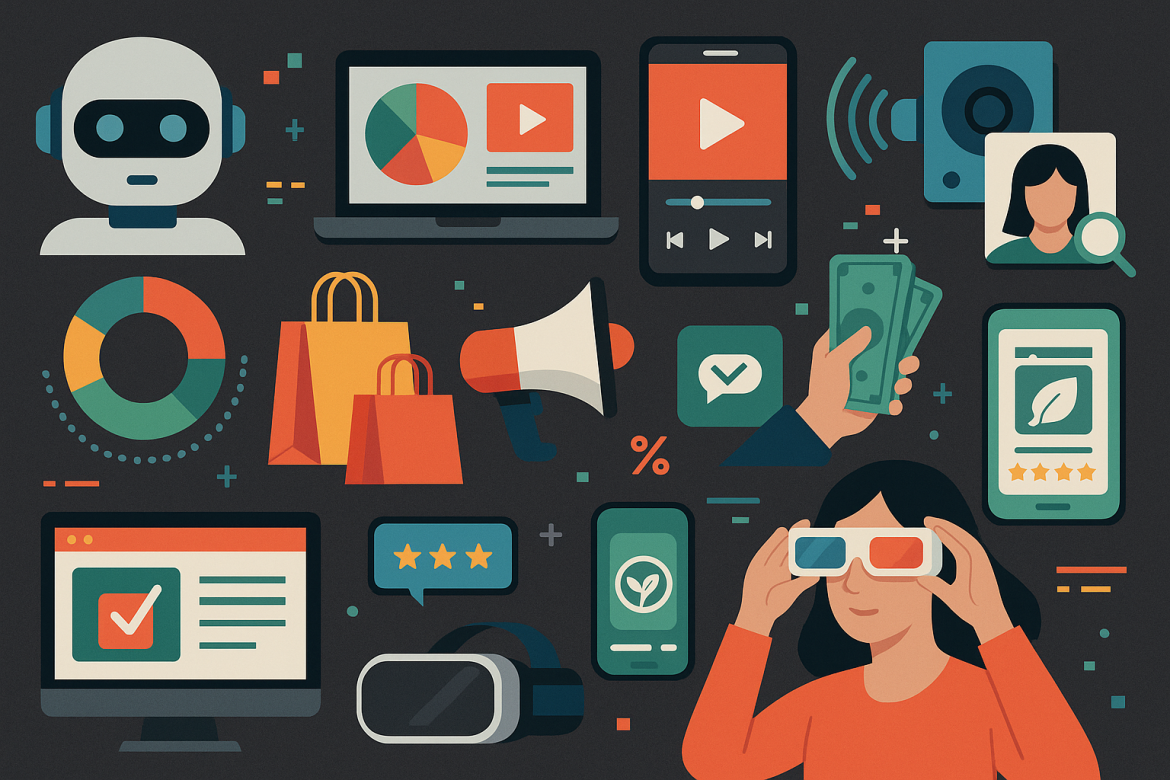The digital marketing landscape continues to shift dramatically, shaped by evolving technologies, algorithm updates, and changes in consumer behavior. For businesses and marketers aiming to stay competitive, adapting to emerging trends is no longer optional—it’s essential. This year brings a wave of innovations that redefine how brands connect, engage, and convert. Below is a detailed exploration of the top 10 digital marketing trends you absolutely cannot afford to overlook.
1. AI-Driven Content Creation and Automation
Artificial intelligence is transforming digital marketing from the ground up. Tools like ChatGPT, Jasper, and Midjourney are enabling marketers to generate blog posts, ad copy, visuals, and even video scripts in minutes.
- Use Cases: Automating email sequences, generating product descriptions, and A/B testing ad creatives at scale.
- Why It Matters: AI boosts efficiency and consistency, allowing brands to scale content production while maintaining quality.
2. Zero and First-Party Data Strategy
With the phasing out of third-party cookies and tighter privacy regulations (e.g., GDPR, CCPA), marketers are pivoting toward collecting data directly from customers.
- Zero-Party Data: Information users voluntarily provide (e.g., quizzes, surveys).
- First-Party Data: Behavioral data collected from owned channels (e.g., website interactions).
- Why It Matters: This data is more accurate, compliant, and helps deliver hyper-personalized experiences.
3. Short-Form Video Dominance
TikTok changed the game, and now platforms like Instagram (Reels), YouTube (Shorts), and even LinkedIn are prioritizing short-form content.
- Best Practices: Hook viewers in the first 3 seconds, keep videos under 60 seconds, and add captions.
- Why It Matters: Short-form video drives high engagement, encourages shares, and is ideal for storytelling in the attention economy.
4. Voice and Visual Search Optimization
As smart devices proliferate, voice search is on the rise. Simultaneously, tools like Google Lens and Pinterest Lens have made visual search more accessible.
- Voice SEO: Optimize content for natural language and question-based keywords.
- Visual SEO: Use high-quality, well-labeled images and implement structured data.
- Why It Matters: These searches signal intent and often lead to quicker conversions.
5. Social Commerce Expansion
Social media platforms are evolving into shopping destinations. Users can now discover, review, and purchase products without leaving the app.
- Key Platforms: Instagram Shop, TikTok Shop, Facebook Marketplace, Pinterest Shopping.
- Why It Matters: It reduces friction in the buyer’s journey and leverages the trust factor built through social proof.
6. Influencer Marketing Maturity
Influencer marketing is becoming more strategic, data-driven, and ROI-focused. Micro and nano influencers (1K–50K followers) are gaining favor due to higher engagement rates.
- Emerging Trend: AI-generated influencers are being tested for campaigns.
- Why It Matters: The authenticity and niche appeal of influencers can create stronger, more relatable brand connections.
7. Interactive and Gamified Content
Interactive formats like polls, quizzes, calculators, and games are becoming go-to tools for engagement and data collection.
- Benefits: Increases dwell time, captures user data, and improves user experience.
- Why It Matters: People crave participation and personalized outcomes, especially in e-commerce and education sectors.
8. Sustainability and Purpose-Driven Branding
Consumers, especially Gen Z and millennials, are supporting brands that align with their values—especially in sustainability, inclusivity, and social justice.
- Tactics: Highlight ethical practices, use eco-friendly packaging, and support meaningful causes.
- Why It Matters: Purpose builds long-term brand equity and trust, influencing purchasing decisions.
9. Immersive Tech: Augmented Reality (AR) and Virtual Reality (VR)
AR and VR are no longer futuristic—they’re now practical tools for customer engagement.
- Examples: AR-powered try-on tools (L’Oréal, IKEA), VR product demos, 360-degree virtual showrooms.
- Why It Matters: Immersive experiences bridge the gap between online and offline, especially in retail, real estate, and automotive industries.
10. Marketing as a Service (MaaS) and Agile Teams
Marketing departments are moving toward modular, on-demand structures—outsourcing specific tasks or bringing in expert agencies for short bursts of campaign execution.
- Shift: From rigid teams to flexible squads that adapt to campaign needs.
- Why It Matters: Speed and specialization are critical in a fast-changing environment.
Conclusion
The digital marketing world in 2025 is dynamic, complex, and full of opportunities. The top trends—from AI to social commerce, from immersive tech to data ethics—demand not just attention, but strategic action. Marketers who embrace these innovations, while staying rooted in authentic storytelling and value delivery, will not only survive but thrive in the evolving landscape.
Staying ahead means continuously experimenting, adapting, and learning. The brands that invest in agility, technology, and consumer trust today are building the digital empires of tomorrow.




